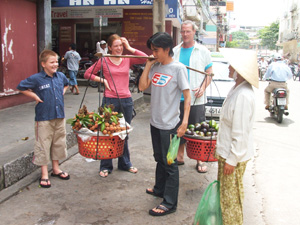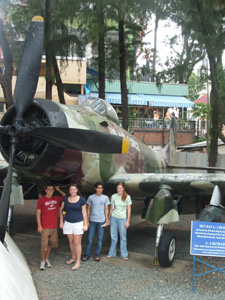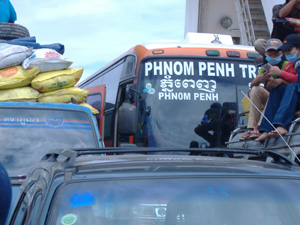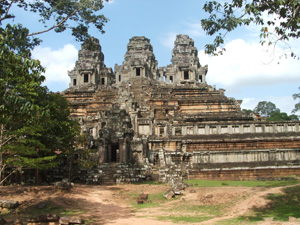
Landmines, easier laid than removed, continue killing and maiming in Cambodia, nearly forty years later
Sailing Faith: The Long
Way Home

In the streets of Saigon, Ho Chi Minh City, Vietnam
The Gregg A Granger
Family Adventure
| home |
| the long way home |
| blog |
| destinations |
| passages |
| contact |

Abandoned U. S. aircraft in War Crimes Museum, Saigon, Ho Chi Minh City, Vietnam
![]()
Bangkok, Thailand
The Chatuchak Weekend Market sits on thirty-five acres, and has more than 15,000 shops and stalls. Emily and Ardi explore on their own, as do Amanda and Jacob. Lorrie, Greggii, and I enjoy the day until Greggii gets tired, which tends to suck energy out of anybody around him. He thinks a foot massage will help. I agree. There we are, Greggii and I in adjacent chairs, getting our feet worked over. Greggii laughs and wiggles because it tickles. I grimace and groan because it hurts. (pages 137-138)
Cambodia
While Europeans lived like Mel Gibson in Braveheart, Asians were building the temples and governments and cities we witness the remnants of today, Angkor Wat being one of the more famous. The residences and palaces of wood did not survive, but the temples and walls are made of stone and have survived 800-1,200 years.
In the afternoon, we visit the Landmine Museum, founded by a man who, as a boy, worked for the Khmer Rouge to walk in front of the soldiers and locate landmines, and who survived whole to tell the story. He was expendable because, at eight years old, he couldn’t carry a rifle. Most of the museum staff are victims of landmine accidents. (page 140)


An Angkor temple near Siem Reap, Cambodia